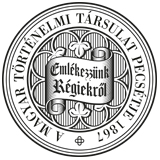Századok – 2005
TANULMÁNYOK - Orosz István: A kisebb királyi haszonvételek kérdése a reformkorban és 1848-49-ben 515
542 OROSZ ISTVÁN Az áprilisi törvények végrehajtási utasításának is tekinthető 1853. évi úrbéri nyíltparancs, minden országgyűlési tervezetet törvénytelennek tekintve megerősítette, hogy „a földesúri korcsmálási, malom- és halászati jog tekintetében, ezen jogok szabályozásának fönntartása mellett, az eddigi törvények határozatai szolgálnak zsinórmértékül." A „politikai hatóságokat" azonban arra is felszólította a rendelet, hogy „a korcsmálási jognak a volt jobbágyok részérőli megszegése eseteiben a törvényes büntetéseket- kiszabják"10 2 Az a sokféle törvényi szabályozás, amely a kisebb királyi haszonvételeknek nevezett urasági privilégiumokkal való élést szabályozta, igen szívósnak mutatkozott nemcsak a feudális viszonyok között, de a polgári korszakban is. 1848 után még négy évtizedre volt szükség végleges megszüntetésükre. Ε folyamat végig kisérése azonban már nem lehet e tanulmány feladata. THE QUESTION OF THE MINOR ROYAL USUFRUCTS IN THE REFORM ERA AND IN 1848-49 by István Orosz (Summary) The minor royal usufructs (regalia minora) were seigneurial monopolies, whose origins had been forgotten by the first half of the 19th century. Consequently, they were regarded as belonging to the property rights {jus terrestrale). Wine retail was allowed for the tenants during part of the year, they could also make brandy but not sell it in small amounts, whereas the opening of a shop was dependent on the payment of a seigneurial tax. Annual and weekly markets could only be held on the basis of a royal privilege. Butchery, the collection of tolls, the running of ferry and mills, hunting, fishing and fowling (as well as, in some places, the burning of bricks and tiles) were all exclusive seigneurial rights. The study briefly examines the development of these regalia in the 16th-18th centuries. It comes to the conclusion that as sources of revenue they only became of importance in the management of the early modern great estates. The most lucrative among them was wine retail even in regions where wine production was not important. Its part among seigneurial revenues was especially important in the market towns. The monopoly of hunting was especially hard to establish since among the tenants' dues deers and rabbits could only be acquired by hunting. By the second half of the 18th century the manifoldedness of the regalia had been complicated by several local varieties. The patent of Maria Theresia (1767), although not completely erasing the usufructs, tried at least to curb the abuses. At the beginning of the reform era Széchenyi and Wesselényi argued against the monopolies and the regalia, while József Dessewffy defended them as part of the property. A detailed and thorough debate on the minor royal usufructs took place in the Parliament of 1832-36. Those who urged for an eternal redemption of the revenues deriving from the regalia in the manner of other tenants' dues were rejected at the outset. The majority insisted on a separation of the regalia from other seigneurial dues. Finally the laws enacted in 1836 allowed for tenants with vineyards the wine retail from Michaelmas to Saint George, while for those without vineyards only to Christmas. Tenants were also authorised to make brandy (from grain only there where it had been customary hitherto), for an annual due of two forints by the copper. Sale was only permitted by the gross, however. For the opening of a shop 10 to 20 forints were paid to the lord, depending on the quality of the shop. In the case of butchery, fishing, hunting, fowling, fairs and markets, customs and ferries the existing conditions were maintained. The laws of 1848 liberated the tenants by compensating the lord, but they did not touch upon the regalia. This led to widespread discontent, and some of the former tenants began to use them as well. 102 Úrbéri nyíltparancs 23-24.§
